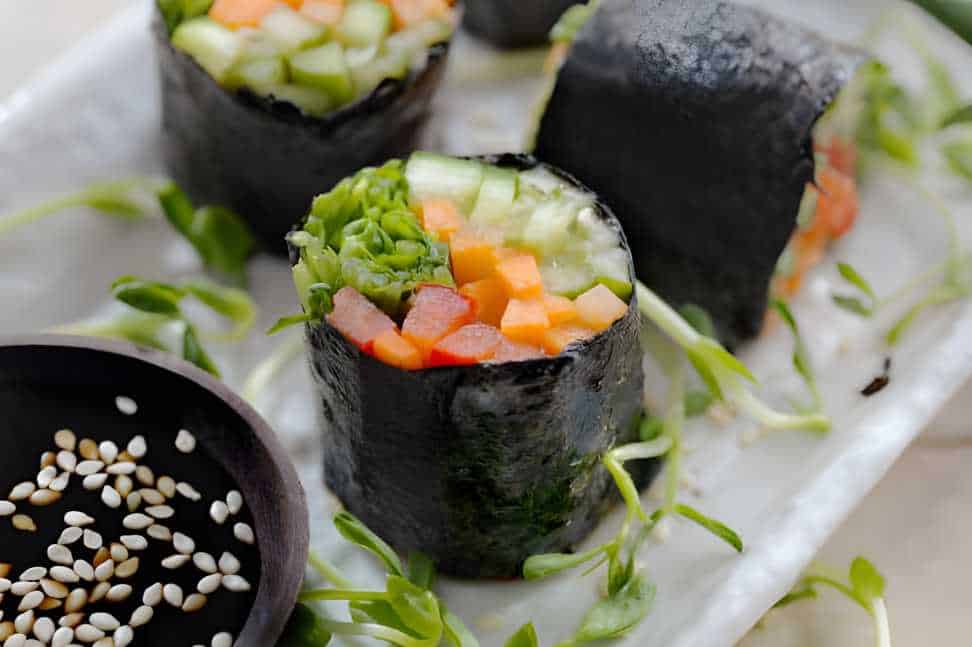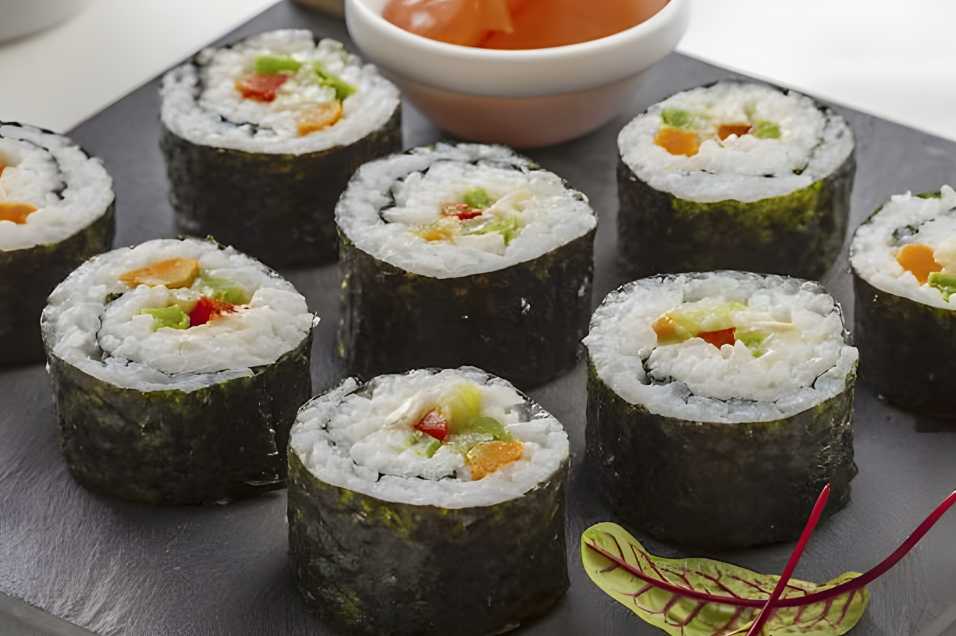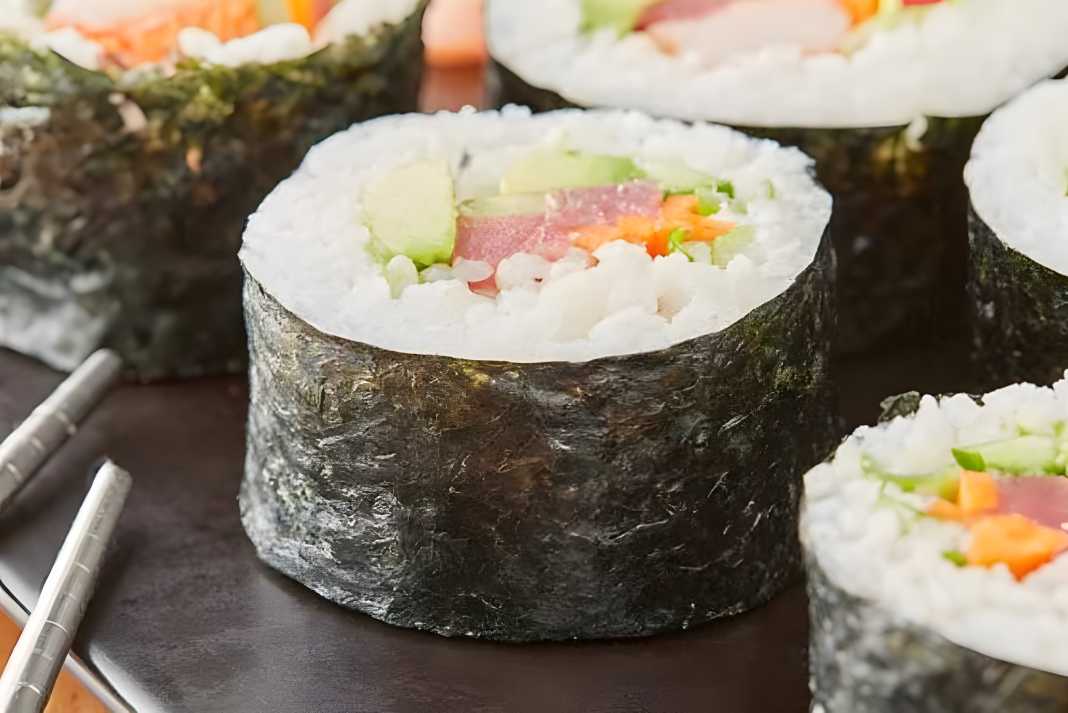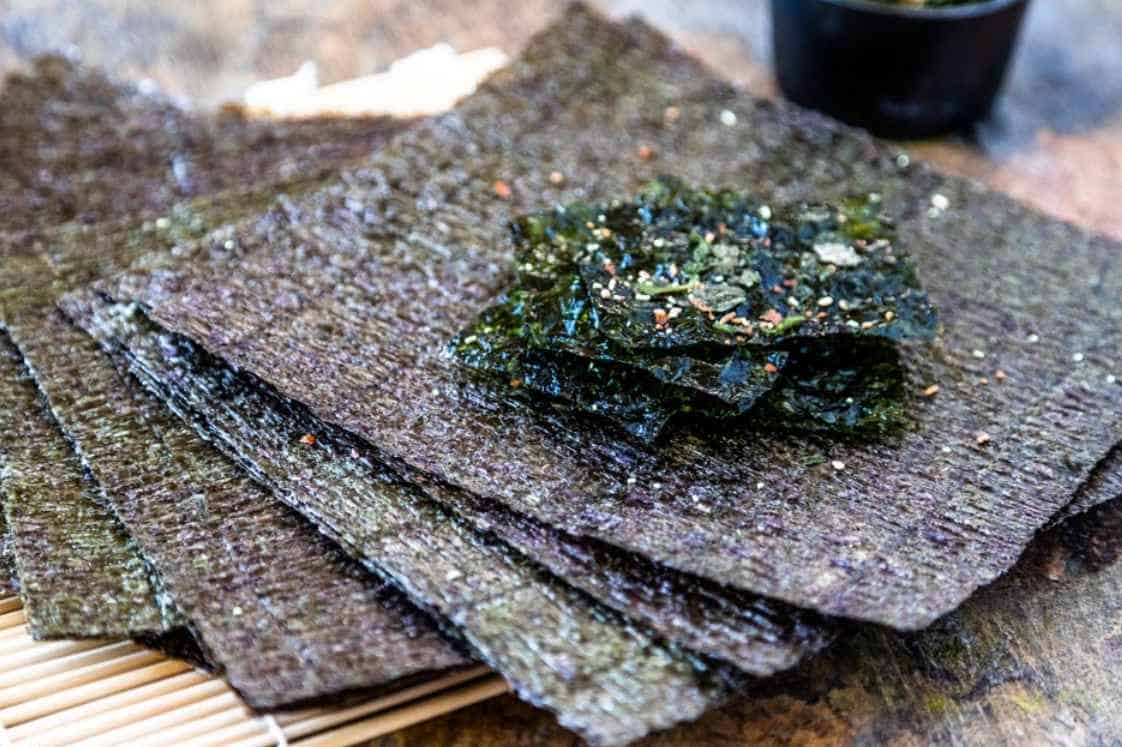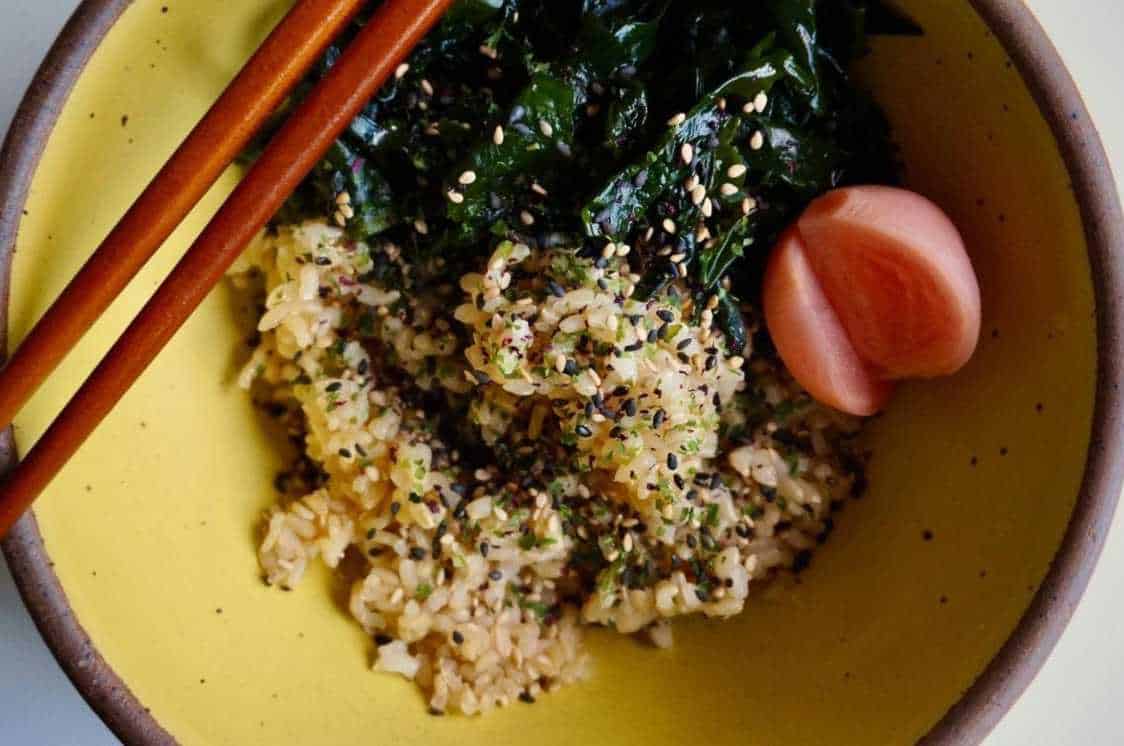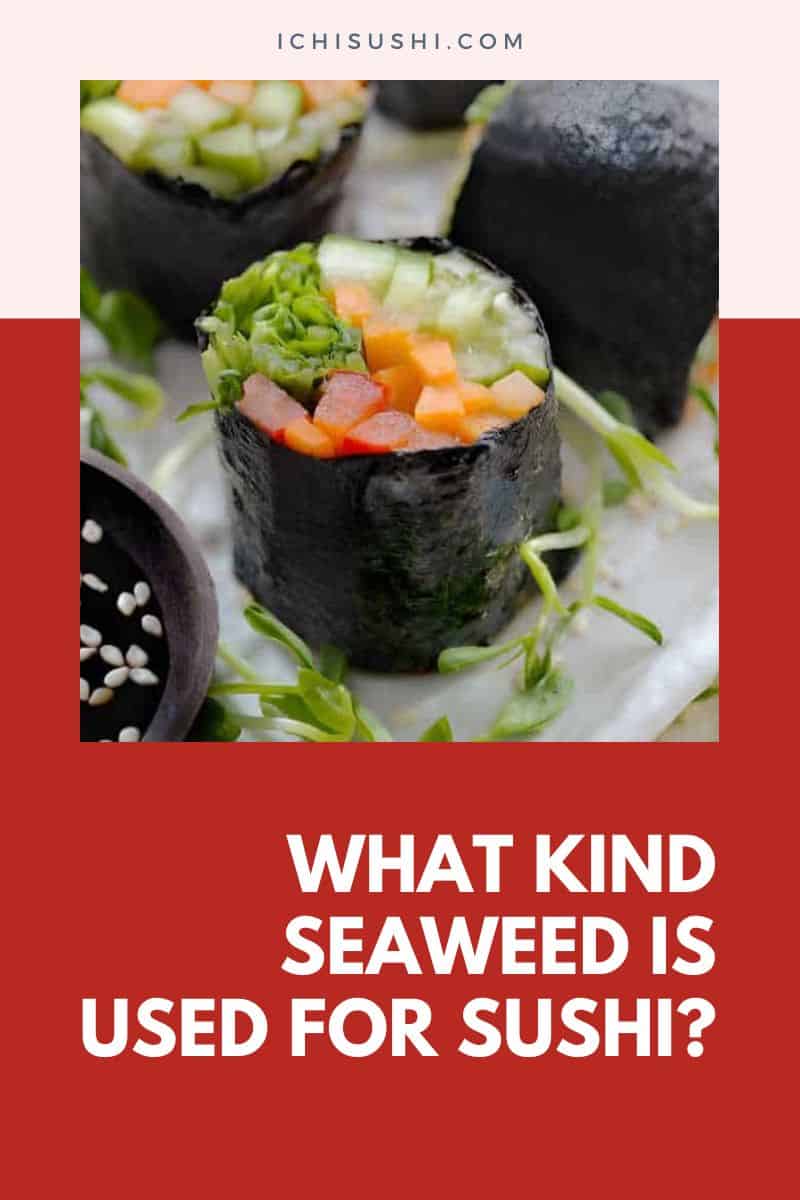Are you getting into sushi lately? You’re probably wondering what that dark green to black, shiny wrap is. Well, lots of people ask that too! That black wrap is a type of seaweed.
It is a common ingredient in sushi that brings a delectable taste to your roll. On this page, you’ll learn what seaweed is used for sushi, its history, and the numerous health benefits you can get from it.
What is Seaweed?
Seaweed is an umbrella term for sea vegetables. These vegetables are various, which can be species of algae to marine plants. They can be red algae, green algae, or brown algae. Some variations of seaweed are even calcified!
Edible seaweed has a smooth, silky texture. It can have a sweet or salty taste, depending on the seaweed you are eating.
You probably know a few types of seaweed. But did you know that there are over 10,000 seaweed species discovered in the world? Yes, you read that correctly! More than 10,000 seaweed are available in marine life.
The most common species are dulse, arame, kelp, nori, and spirulina. Which among these are used for sushi, you may ask? This article will answer everything you need to know about what seaweed is used for sushi.
History of Seaweed and Cooking
If you think seaweed is a trend that has just risen into popularity, you’re wrong. Seaweed has been present in culinary for ages. Seaweed has been used in different cuisines in Asia.
The top Asian countries that use seaweed in cooking are Korea, China, and Japan, and these countries have included seaweed in cooking since pre-historic times.
In fact, according to Sze Teu from China in 600 BC, the most respected guests, like kings, should be served with algae as a delicacy.
In Japan, six species of seaweed have been used for everyday cooking. Over 10% of the diet in Japan accounts for seaweed. The average seaweed consumption per household in the country reached 3.5 kilograms in 1973 and has increased over the years.
In Korea, seaweed cultivation started with Pyropia species from 1623 to 1649. Since then, technologies for seaweed cultivation sprung in the country in the 1970s.
Among the most common dishes that seaweed is used for is sushi. Most types of sushi can not be complete without a seaweed wrap. So, what seaweed is used for sushi?
What seaweed is used for sushi?
The seaweed used for sushi is nori.
Nori is from the genus Pyropia. Nori is described as a flat, dried sheet of seaweed. It is a common type of seaweed in Japan. This type of seaweed has a crunchy texture. Its flavor is salty. Nori is often used in snacks, garnishes, and other varieties of food.
Taste
Nori has a distinct taste. Its flavor is intense, often used to wrap sushi rolls and onigiri or rice balls. Nori’s taste is frequently depicted as smoky and salty. Some people like dipping nori in soy sauce to make the seaweed sheet more flavorful.
Culinary use
Nori is a common ingredient in sushi. Onigiri also uses nori. It can also be used as a garnish in noodle dishes. Before serving, nori is often toasted.
One of the most popular secondary nori products is toasted flavored nori, referred to as ajitsuke-nori. Flavored nori is made by applying a flavored mixture and toasting the nori.
Serving
Nori can be eaten with it being the wrap of sushi rolls, and it can also be made into a flavored paste, specifically with soy sauce. Nori no tsukudani is what it is called. Another way to serve nori is to use it to decorate your meals.
In sushi, nori is commonly used to wrap the rolls outside, but sometimes, nori can be found inside your sushi roll. This inside-out sushi is called uramaki sushi.
Uramaki is an inside-out sushi roll. Unlike the regular sushi with an outside seaweed wrap, uramaki is wrapped with sushi rice, where nori is inside.
Why is nori seaweed used in sushi?
Nori is used in sushi because it has a distinctive flavor that makes your sushi roll even tastier. It is also a great source of nutrients and vitamins. Nori is also easy to manipulate and wraps your roll tightly with the proper rolling and wrapping technique.
Another reason nori is used in sushi is that roasted nori is more difficult to rip and break. Sushi won’t fall apart when using chopsticks. Nori can be easily manipulated, too. Plus, it can be easily found in almost all stores everywhere.
How to choose good nori for sushi?
There are several factors to consider to choose the best nori for your sushi. Always check the seaweed’s color, shine, weight, consistency, and thickness. Having a high-quality seaweed wrap will boost the flavors of your sushi roll and improve its taste.
Below is a checklist you can bring with you when shopping for the best nori:
- Dark-colored sushi, close to black
- Shiny, reflective surface
- Thick and can not be easily ripped or torn
- Heavy
- Avoid nori combined with other kinds of seaweed
- Scan the ingredients list
- Roasted nori is better than raw nori
How to store sushi nori?
Because nori is dried seaweed, you do not need to refrigerate it. Storing nori can be quickly done by keeping it in your pantry at room temperature.
If you have unopened packs of nori, you do not have to transfer them to another container. Its sealed packaging will provide enough preservation.
Storing nori can extend its shelf life. A closed pack can last up to 2 to 3 years, while an opened one lasts for 1 to 2 years. But if you don’t store nori correctly, it can get spoiled and lose its taste after several months.
Is sushi nori healthy?
Yes! Nori in your sushi provides nutrients and gives several health benefits. Surprisingly, nori can have ten times the calcium milk has! Nori also contains high levels of Vitamin A, B, C, D, and E. It is also a good source of Vitamin K, niacin, and folic acid.
Here are the other health benefits of nori:
- Nori helps enhance weight loss.
- It is beneficial to thyroid functions.
- It benefits people with diabetes.
- It supports gut health.
- It is anti-inflammatory.
- It promotes bone health.
- It boosts brain functions.
Nutrient (Seaweed per 100g) | Amount (g) |
Protein | 5.0 |
Carbohydrates | 20.0 |
Fiber | 3.0 |
Fat | 1.0 |
Calcium | 150.0 |
Iron | 3.0 |
Vitamin C | 10.0 |
Vitamin K | 300.0 |
Other Common Types of Seaweed and Their Use
As mentioned earlier, there are over 10,000 types of sushi. But we’re not going to dive deep into that. To make things simpler for you, we’ve listed the most popular types of seaweed used in cuisines:
- Wakame: Wakame is edible seaweed with a unique sweet taste that gives soups and salads additional flavor. It is low in calories but high in essential nutrients that benefit your health. Among wakame’s health benefits are improved heart health and weight loss. It is also an excellent source of iodine which is good for your thyroid. Wakame, also called sea lettuce, is cultivated in Korea and Japan.
- Dulse: In Spanish, dulse translates to sweet. However, this type of seaweed isn’t subtly sweet like sugar kelp. Dulse is often seen in Ireland and Eastern Canada. It is a good source of fiber and protein. Dulse also contains vitamins, minerals, healthy fatty acids, and antioxidants. It is seaweed high in iodine and beneficial to thyroid health. Dulse is used as a snack. It can also be added to sandwiches and salads. Some people sprinkle dulce over scrambled eggs to twist the cooking.
- Hijiki: Hijiki is a type of seaweed presenting similarities with dried tea leaves. This type of seaweed is dark brown and is on rocky coastlines. Hijiki is often eaten as hijiki no nimono, which means “braised hijiki.” It is a very nutritious seaweed.
- Irish moss: Irish moss is a seaweed used in various industries, commonly culinary. It is a type of red algae that turns jelly-like when in water. Irish moss can also be taken as a food supplement.
- Kombu: Kombu or konbu is a type of seaweed; It is edible kelp. It is known for having an excellent amount of glutamic acid. These brown algae are often used in miso soup, noodle soup, and other hot pot dishes.
- Umibudo: Umibudo is a type of seaweed with a fresh, salty taste like the saltwater of the oceans. It is a must-try seaweed very rich in minerals. It is common in Asian countries. This type of seaweed is also called grape seaweed as they are like grape-like balls.
Summary
So, what seaweed is used for sushi? It’s none other than nori. Nori is an indispensable sushi ingredient that takes the flavors of your favorite sushi roll to another level.
Making sushi without this ingredient will never be the same! Ensure you know how to spot the best nori for your sushi to enjoy its excellent quality and taste.

Hiroshi Nakamura, a Tokyo-born sushi chef turned US-based writer and critic, is the voice behind ichisushi.com, blending traditional sushi wisdom with modern insights.
